South Africans without solar power are starting to feel the real cost of relying solely on the national grid. With municipal electricity tariffs climbing higher each year, many households are seeing electricity bills stretch into the thousands — even for average energy use. Meanwhile, the price of solar panels, batteries, and inverters has dropped dramatically, making solar power more accessible than ever.
Thank you for reading this post, don't forget to subscribe!A recent analysis conducted shows that most South African households could save money by installing a solar power system capable of supplying 80% of their energy needs — even when factoring in financing costs. For homeowners still depending entirely on Eskom or municipal power, the numbers tell a sobering story.
The Rising Cost of Staying on the Grid
In 2025, electricity bills in major metros and municipalities have risen sharply. Homeowners have taken to social media to complain about bills running into several thousand rand — even when their consumption isn’t excessive.
Eskom’s average residential consumption sits at around 656kWh per month on its most common tariff plan. For many, that translates to an average bill between R2,189 and R2,664 — depending on the city.
However, many households use significantly more than this, pushing their bills even higher. And while electricity prices have climbed exponentially over the years, solar technology has gone in the opposite direction — becoming cheaper, smarter, and more efficient.
The Solar Power Advantage
Modern solar power systems are highly customizable. Installers typically design them to match a household’s unique consumption patterns and location. Entry-level setups have become increasingly common, offering a balance between affordability and performance.
A typical entry-level solar package now includes:
- 6–8 solar panels (450W–550W each)
- A 5kW hybrid inverter
- A 5kWh–10kWh lithium battery
A system like this can support most household essentials — from lighting and appliances to a geyser — and provide enough battery backup to last through two to four hours of load-shedding.
And with battery prices dropping exponentially, many homeowners are opting for larger 10kWh storage systems to make better use of self-generated energy at night.
For example, a 6-panel system can often fully charge a 5kWh battery by midday, even after heating water. Any extra energy produced often goes to waste, though — since most municipalities still make it financially unattractive to sell excess power back to the grid due to high bidirectional meter costs and poor feed-in tariffs.
The Cost of Going Solar in 2025
So, how much does it actually cost to get started with solar?
As of October 2025, one reputable Pretoria-based installer offered a 6 x 545W Canadian Solar panel, 5kW Deye hybrid inverter, and 10.24kWh Dyness battery package — fully installed and certified — for around R70,000.
That’s a steep upfront investment for most households, but here’s where it gets interesting:
If financed through a five-year loan at 20.5% interest, the monthly repayment would be about R1,795.
Compare that to the average monthly Eskom bill of R2,189–R2,664 for 656kWh — and solar suddenly starts to make financial sense.
Solar vs Grid: The Numbers Don’t Lie
MyBroadband calculated the monthly costs of staying on grid power versus installing a solar system in 12 major South African municipalities. The solar setup was assumed to supply 80% of household energy needs, with only 20% drawn from the grid.
| City / Utility | Grid Only (656kWh) | Grid + Solar (131.2kWh) | Solar System Cost (R1,795) | Difference |
|---|---|---|---|---|
| Tshwane | R2,660 | R466 | R2,261 | –R399 |
| Nelspruit | R2,585 | R392 | R2,187 | –R398 |
| Gqeberha | R2,616 | R457 | R2,252 | –R364 |
| Kimberley | R2,323 | R413 | R2,208 | –R115 |
| Polokwane | R2,455 | R550 | R2,345 | –R110 |
| Ethekwini* | R2,474 | R430 | R2,440 | –R34 |
| Bloemfontein | R2,238 | R418 | R2,213 | –R25 |
| Ekurhuleni | R2,400 | R591 | R2,386 | –R14 |
| Johannesburg | R2,454 | R646 | R2,441 | –R13 |
| Cape Town | R2,664 | R866 | R2,661 | –R3 |
| Eskom Direct | R2,645 | R861 | R2,656 | +R11 |
| Klerksdorp | R2,189 | R589 | R2,384 | +R195 |
| Rustenburg | R2,348 | R817 | R2,612 | +R264 |
(Ethekwini assumed a slightly lower 70% self-use rate due to less sunlight availability.)
As shown above, most municipalities offer immediate savings for households that switch to solar — especially in Tshwane, Nelspruit, and Gqeberha, where the difference is close to R400 per month.
Even in metros with higher fixed charges, like Cape Town, the savings are still marginally in favour of solar.
Only Eskom Direct, Klerksdorp, and Rustenburg residents would pay slightly more with the solar option — primarily due to the structure of their tariffs and fixed costs.
Also check: New Solar Compliance Rules Could Make Going Off The Grid Cheaper
The Hidden Value of Solar: Independence and Stability
Beyond just saving money, installing a solar system offers energy independence, something that’s hard to quantify but deeply valuable in South Africa’s reality.
Load-shedding may have become less severe in 2025, but grid instability and tariff increases remain a constant concern. A hybrid solar setup shields you from blackouts, helps manage rising energy costs, and adds value to your home.
For many, the motivation isn’t only financial — it’s about reliability, peace of mind, and long-term sustainability.
Why Solar Is No Longer a Luxury
Not long ago, solar energy was considered a luxury for the wealthy. Today, it’s becoming a mainstream financial decision.
Prices for solar components have dropped significantly, and financing options — including home improvement loans, green energy loans, and pay-as-you-save plans — have made solar systems accessible to middle-income families.
With grid electricity expected to rise by another 10–15% annually in some municipalities, investing in solar now could mean avoiding future financial strain.
Read more: Budget-Friendly Electricity Saving Tips for Township Families
If you’re still depending entirely on Eskom or your local municipality for electricity, it might be time for a reality check.
Even after factoring in financing costs, most South Africans would pay less overall with a solar power system supporting at least 80% of their consumption. And those savings grow each year as tariffs climb higher.
For municipalities with low or no fixed fees — like Tshwane, Polokwane, and Nelspruit — the shift is a no-brainer.
As electricity costs continue to soar, the real question isn’t “Can you afford solar?” — it’s “Can you afford not to?”




